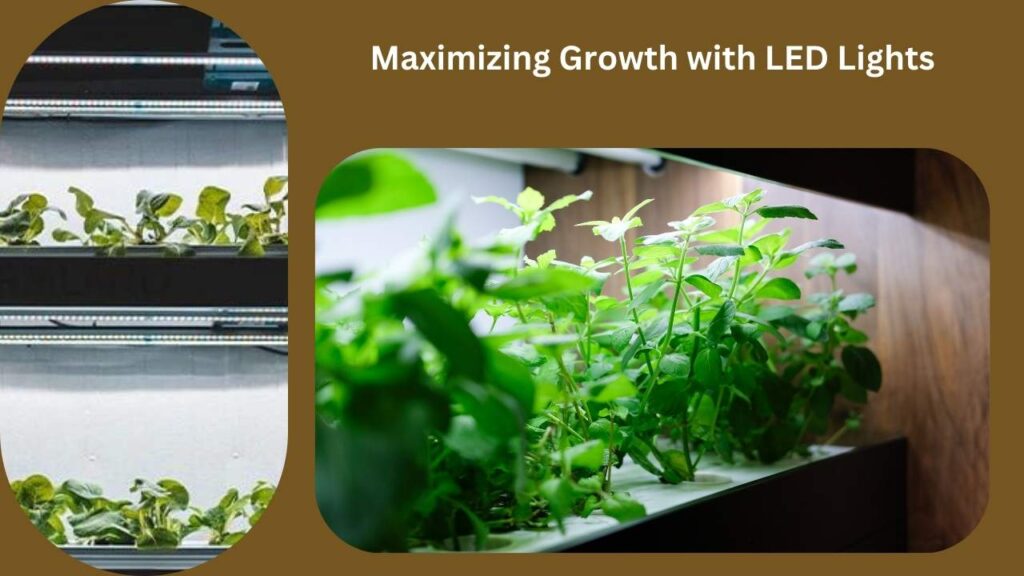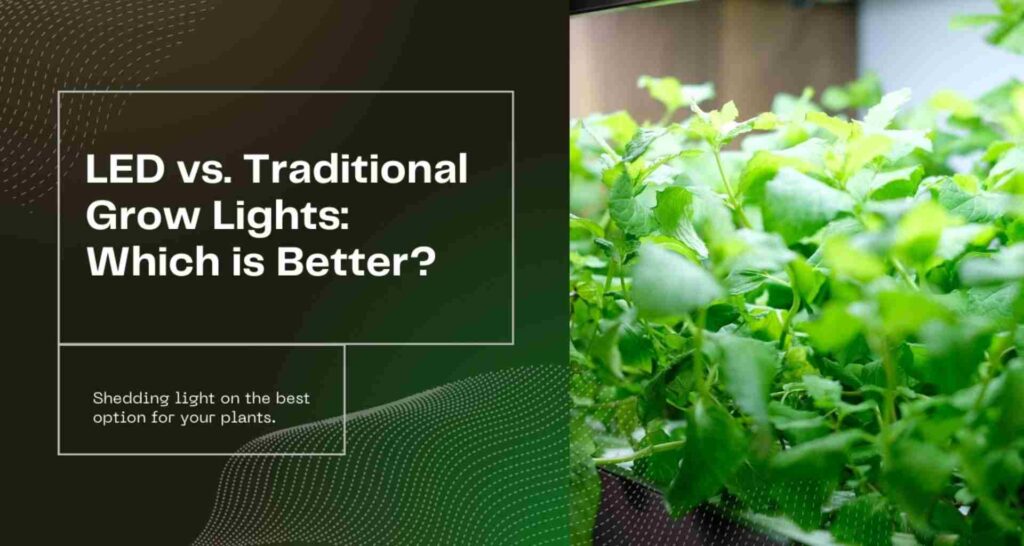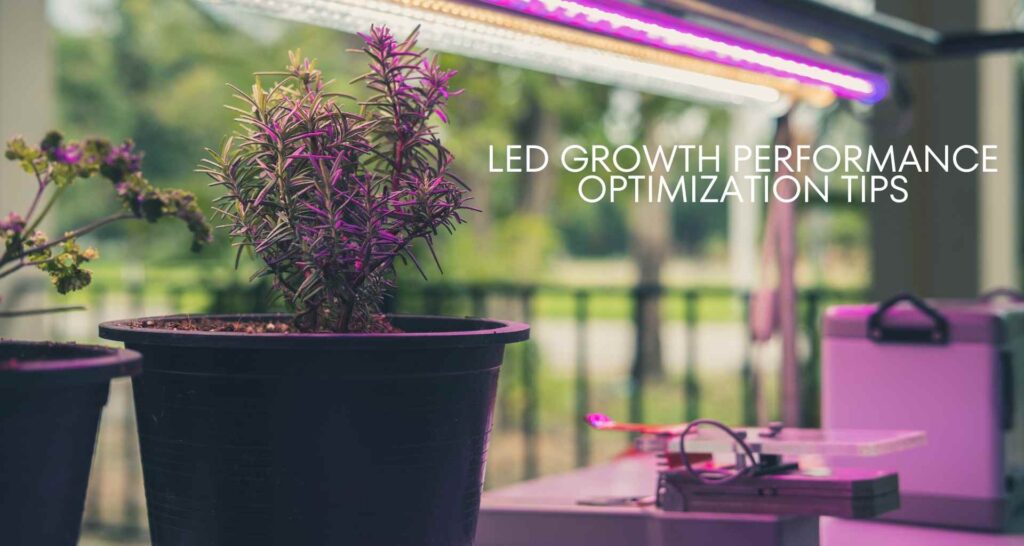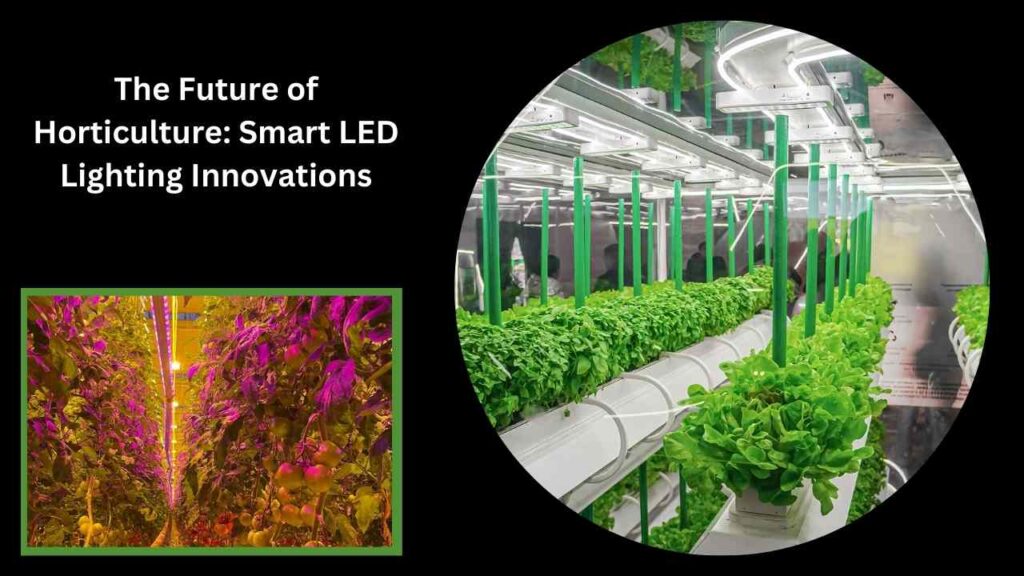The benefits of smart LED lighting in horticulture are profound and multifaceted. These advanced lighting systems have revolutionized modern farming by offering precise control over light spectrum, intensity, and duration, all critical factors for optimizing plant growth and development. Unlike traditional lighting methods, smart LED systems are highly efficient, consuming less energy while delivering tailored lighting conditions that mimic natural sunlight. This capability not only enhances photosynthesis but also promotes higher crop yields and better quality produce. Moreover, the automation features of smart LED lighting simplify maintenance tasks, allowing growers to focus more on crop management and less on manual adjustments. In essence, the integration of smart LED lighting in horticulture represents a pivotal advancement, driving sustainable farming practices and bolstering food production capabilities worldwide.
Smart LED lighting in horticulture uses programmable LED lights. They cater to various plant species’ needs. These systems enhance plant health and yield. They also improve energy efficiency. They promote sustainable cultivation practices. Smart LED lighting creates optimal lighting environments. It boosts plant growth and reduces costs. It minimizes environmental impact. This article explores the benefits of smart LED lighting. It offers insights and tips for successful indoor gardening.
Overview of Smart LED Lighting Systems

In modern horticulture, smart LED lighting systems represent a significant leap forward from traditional lighting methods like HID (High-Intensity Discharge) and fluorescent lights. These systems are designed to provide precise control over various aspects of lighting that directly impact plant growth and development.
Smart LED systems offer programmable schedules, spectrum control, and remote monitoring for customized plant lighting. They adjust light wavelengths for optimal growth, unlike broad-spectrum conventional lights. This targeted approach boosts photosynthesis and saves energy efficiently.
Moreover, Smart LED lighting excels in efficiency and longevity. LEDs are known for their energy efficiency, converting a higher percentage of electricity into usable light compared to traditional lighting technologies. This efficiency not only reduces electricity costs but also contributes to sustainable indoor gardening practices by minimizing energy consumption.
Smart LED systems emit minimal heat, unlike HID lights. HID lights generate significant heat, requiring ventilation. LEDs allow closer placement to plants without heat damage. This optimizes space and reduces operational complexities.
Furthermore, the integration of smart features such as automated light schedules and remote monitoring enhances convenience and precision in managing indoor gardens. Growers can remotely monitor and adjust lighting parameters based on real-time data, ensuring consistent and optimal conditions for plant growth even when they are not physically present.
In essence, smart LED lighting systems are revolutionizing indoor horticulture by offering superior control, efficiency, and sustainability. The benefits of smart LED lighting in horticulture are profound, as growers can create ideal growing environments that maximize plant health, yield, and overall productivity while minimizing environmental impact and operational costs.
Benefits of LED Grow Lights for Indoor Horticulture

LED grow lights have revolutionized indoor gardening by offering several significant benefits that enhance plant growth, energy efficiency, and overall cultivation success.
Energy Efficiency
LED grow lights are more energy-efficient than traditional HID (High-Intensity Discharge) and fluorescent lights, converting more electricity into usable light. This minimizes energy wastage and cuts electricity bills for indoor gardeners. Their efficiency reduces operational costs and supports sustainable gardening by lowering carbon emissions from energy use.
Longer Lifespan
One of the standout features of LED grow lights is their extended lifespan. On average, LED lights can last up to 50,000 hours or more, which is significantly longer than traditional lighting options. This durability translates into reduced maintenance requirements and lower replacement costs over time. Growers benefit from consistent light output without the frequent hassle of replacing bulbs, making LEDs a cost-effective long-term investment for indoor horticulture.
Optimal Light Spectrum
LED grow lights offer precise control over the light spectrum emitted, catering to the specific needs of different plants and growth stages. LED lights customize wavelengths for photosynthesis. Blue light aids vegetative growth. Red light aids flowering and fruiting. Spectral control optimizes plant growth and health.
Low Heat Emission
Another advantage of LED grow lights is their minimal heat emission. Unlike HID lights, which can generate significant heat, LEDs produce very little heat close to the plants. This characteristic reduces heat damage and lets growers place lights closer to plants. It cuts cooling needs and boosts energy efficiency in indoor gardening setups.
Space Efficiency
LED grow lights are compact and versatile, making them ideal for maximizing space in indoor gardening environments. Their small size and flexible mounting options enable growers to optimize space utilization, especially in vertical farming or grow tents where space is limited. This compact design also facilitates even light distribution across plants, ensuring uniform growth and maximizing the use of available grow space.
Enhanced Control
Smart LED systems offer advanced control features that empower growers to fine-tune lighting parameters for optimal plant growth. These systems often include programmable settings for light intensity, spectrum, and duration, allowing growers to create customized lighting schedules tailored to different plant species and growth phases. Advanced models may also integrate with environmental sensors to automatically adjust lighting based on factors such as humidity, temperature, and CO2 levels, ensuring plants receive ideal growing conditions at all times.
Improved Plant Health
By providing plants with the precise light spectrum they require, LED grow lights contribute to improved overall plant health. Plants grown under LED lighting typically exhibit stronger stems, healthier foliage, and enhanced resistance to pests and diseases. The ability to tailor light spectra to specific plant needs promotes robust growth from seedling to harvest, resulting in higher-quality crops with improved nutritional value and aesthetic appeal.
Cost Savings
The initial investment in LED grow lights may be higher. However, long-term cost savings are substantial. Lower energy consumption contributes to savings. Reduced replacement costs due to longer lifespan also save money. Decreased need for cooling systems reduces costs further. Growers save significantly over the lights’ operational life. Resources saved on energy and maintenance can be reallocated. This enhances overall profitability. It also boosts sustainability in indoor gardening operations.
Environmental Sustainability
LED grow lights are eco-friendly choices for indoor horticulture. They are free of harmful substances like mercury, found in fluorescent lights, ensuring safer disposal and minimal environmental impact. Their energy-efficient operation lowers greenhouse gas emissions from electricity generation, promoting eco-conscious growing practices. By using LED lighting, growers support environmental sustainability while benefiting from improved crop production and financial gains.
Versatility
LED grow lights are versatile, ideal for everything from home setups to commercial operations. They work well in hydroponics, aeroponics, and vertical farming systems. Their adaptability to various plant types and growth stages enhances productivity and yield in diverse indoor gardening settings.
Comparing LEDs to Traditional Grow Lights

In the realm of indoor horticulture, LED grow lights have emerged as a game-changer, offering several advantages over traditional lighting systems such as HID (High-Intensity Discharge) and fluorescent lights.
Efficiency
LED grow lights are significantly more efficient than traditional options. They convert a higher percentage of electricity into usable light, reducing energy waste and operational costs. Traditional HID lights emit substantial heat, requiring additional cooling systems that increase energy consumption.
Customization
One of the standout features of LED systems is their ability to customize light spectra. LEDs can emit specific wavelengths that correspond to peak absorption by plants during photosynthesis. This capability allows growers to tailor lighting setups precisely to the needs of different plant species and growth stages. Traditional lights like HIDs and fluorescents offer less flexibility in spectrum control, limiting their suitability for optimizing plant growth and development.
Lifespan and Durability
LED grow lights last significantly longer than traditional options. LEDs can operate up to 50,000 hours or more, while HID bulbs last about 10,000 to 20,000 hours. This extended lifespan means reduced maintenance costs and fewer disruptions for indoor gardens.
Heat Management
LEDs emit minimal heat, unlike HID lights that generate substantial heat. Excessive heat can stress plants and require extra cooling systems. The low heat emission of LEDs lets growers place lights closer to plants without burning foliage, maximizing light absorption and reducing cooling energy expenditure.
Environmental Impact
LED grow lights are more environmentally friendly than traditional options. They contain no hazardous materials like mercury, found in fluorescent bulbs, and emit less heat and CO2. Energy efficiency of LEDs leads to lower carbon emissions, supporting sustainable indoor gardening practices.
Comparing LED grow lights to traditional lights highlights their advantages. LEDs are more efficient, customizable, and have a longer lifespan. They manage heat better and have a lower environmental impact. LEDs optimize plant growth, minimize costs, and reduce environmental footprints. They are a smart choice for hobbyists and ideal for commercial growers. LEDs help achieve sustainable indoor gardening and enhance productivity.
Tips and Tricks for Optimizing LED Growth Performance

LED grow lights are highly versatile tools that can be optimized to maximize plant growth and yield in indoor horticulture. Here are several key strategies for getting the most out of your smart LED lighting system:
Choose the Right Spectrum
LED grow lights offer customizable spectra tailored to different growth stages and plant types. Blue light promotes vegetative growth, while red light stimulates flowering and fruiting. Adjust the spectrum based on your plants’ specific needs throughout their lifecycle.
Adjust Light Intensity
The intensity of LED grow lights should be adjusted according to the growth stage. Seedlings benefit from lower light levels to prevent stress, while mature plants may require higher intensities for robust growth. Use dimmable LEDs to fine-tune intensity without moving the fixtures.
Optimize Light Placement
Proper placement of LED grow lights ensures uniform light distribution and prevents light burn or shading. Follow manufacturer recommendations for the optimal distance between the light source and plant canopy. Consider using reflectors or diffusers to enhance light penetration in dense foliage.
Implement Light Cycles
Mimic natural daylight cycles by programming consistent light and dark periods. Most plants require 12-16 hours of light per day during the vegetative stage and shorter light periods during flowering. Use timers or smart controllers to automate light cycles for convenience and consistency.
Monitor Environmental Conditions
Environmental factors such as humidity, temperature, and CO2 levels influence plant growth alongside LED lighting. Use sensors to monitor these conditions and adjust lighting and ventilation accordingly. Maintaining optimal environmental parameters enhances plant health and productivity.
Regular Maintenance
Keep LED grow lights clean to ensure maximum efficiency and longevity. Dust and debris can reduce light output and lead to overheating. Use a soft cloth or brush to clean the light fixtures regularly, following manufacturer guidelines for maintenance.
Leverage Smart Technology
Smart LED systems offer advanced features like remote monitoring and automated adjustments. Use mobile apps or computer interfaces to monitor lighting schedules, adjust spectra, and receive alerts for maintenance or environmental changes. Smart technology enhances precision and efficiency in indoor gardening.
The Future of Horticulture with Smart LED Lighting

The future of indoor horticulture relies on Smart LED lighting systems. These systems advance plant cultivation in controlled environments. Technology makes them more sophisticated and accessible. Growers gain control and efficiency in managing light for growth.
Smart LED lighting is poised to revolutionize indoor gardening by addressing key challenges and expanding possibilities:
Efficiency and Sustainability
Smart LED systems are designed to optimize energy use, providing the right light spectrum precisely tailored to plant needs. This efficiency not only reduces electricity costs but also contributes to sustainable practices by minimizing energy waste and environmental impact.
Precision and Customization
Unlike traditional lighting methods, smart LEDs allow growers to fine-tune light intensity, duration, and spectrum, addressing the question, do plants like LED lights? This precision enables better control over plant growth stages, from seedling to flowering, maximizing productivity and quality.
Integration of Smart Technology
With advancements in automation and connectivity, smart LED systems, which operate based on how LED lights work, can be remotely monitored and controlled via mobile apps or computer interfaces. Growers can adjust lighting schedules based on real-time data, such as environmental conditions and plant responses, optimizing growth conditions without constant physical presence.
Expansion of Indoor Farming
The versatility and space efficiency of Smart LED lighting support the expansion of indoor farming initiatives. Vertical farms and urban agriculture projects can thrive in limited spaces, utilizing scalable lighting solutions that can LED light grow plants and maximize yield per square foot.
Research and Development
Continued research into LED technology is driving innovation in horticulture. Scientists are exploring new ways to enhance plant responses through spectral tuning and light manipulation, aiming to unlock even greater potential in crop yields and nutritional content. While some may wonder, “Will a normal light bulb grow plants?” the answer lies in the advanced capabilities of LED technology, which far surpasses the effectiveness of traditional lighting in promoting optimal plant growth.
Cost-effectiveness and Longevity
While initial investments may be higher, the long lifespan and reduced maintenance requirements of smart LED systems result in cost savings over time. For those wondering, are LED lights good for plants, the answer is evident in the significant benefits they offer. Growers benefit from reliable lighting solutions that enhance profitability and operational efficiency. The benefits of smart LED lighting in horticulture are evident in these cost savings and improved efficiency.
Also Read More : Impact of LED Lights on Plant Growth and Development
Conclusion
In conclusion, the adoption of smart LED lighting represents a pivotal advancement in the field of indoor horticulture, offering unparalleled benefits for growers worldwide. The benefits of smart LED lighting in horticulture are multifaceted, from energy efficiency and cost savings to precise control over light spectrum and intensity. Smart LED lighting not only enhances plant growth and health but also supports sustainable practices by minimizing energy consumption and environmental impact.
The ability to customize lighting schedules and monitor conditions remotely empowers growers to optimize cultivation outcomes with greater convenience and efficiency. Looking ahead, the future of horticulture is bright with possibilities enabled by Smart LED technology. Innovation promises more efficiencies and applications in urban farming and research-driven crop optimization. Smart LED lighting is a strategic investment for consistent, high-yield crop production indoors. Embrace smart technologies to unlock your indoor garden’s full potential and support sustainable agriculture. By harnessing the benefits of Smart LED lighting, growers can cultivate healthier plants, reduce operational costs, and contribute positively to environmental stewardship. Let us embark on this journey towards innovation and sustainability in indoor horticulture, guided by the transformative capabilities of Smart LED lighting Systems.

